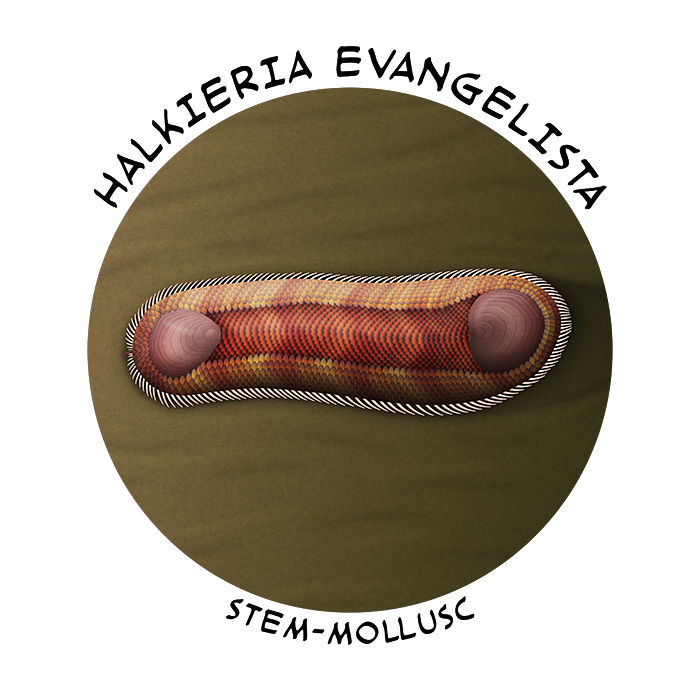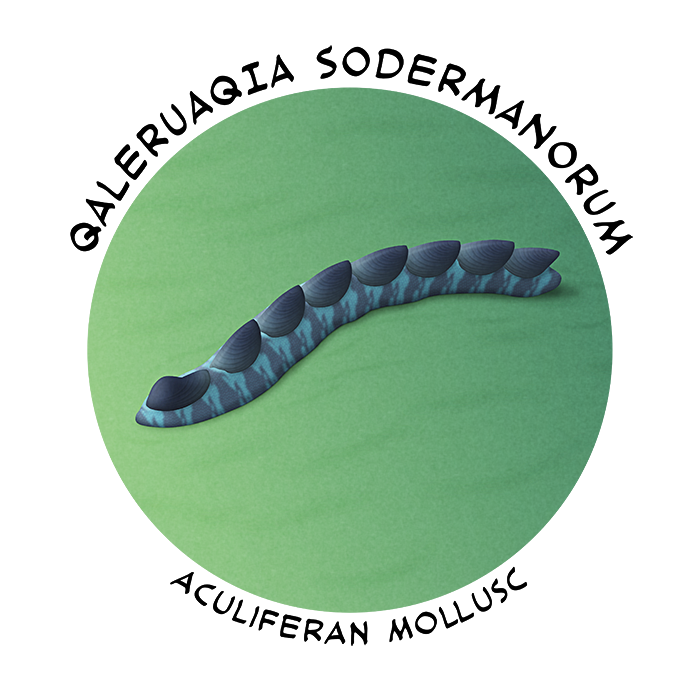Much like Odontogriphus and Wiwaxia, the evolutionary relationships of a group called the halkieriids have been debated for a long time. These animals looked like “slugs in chain mail“, covered in thousands of tiny overlapping mineralized armor plates along with a larger shell plate at each end.
In the past they’ve been assigned to different parts of the lophotrochozoan family tree, sometimes being placed closer to annelids or brachiopods, but at this point they’re generally accepted to be molluscs. The spiny species Orthrozanclus may link halkieriids with wiwaxiids in a larger “halwaxiid” lineage of early molluscs – or they might instead be early members of a group called aculiferans.
Aculiferans are represented in modern times by chitons and aplacophorans, and they’re distinguished from all other molluscs by having either eight shell valves (chitons) or no shell at all and a worm-like body covered with tiny calcareous spines (aplacophorans).
(Also chitons are especially weird, with magnetite teeth and thousands of eyes in their armor plates.)
A related fossil species called Calvapilosa kroegeri from the early Ordovician of Morocco (~480 million years ago) seems to link halkieriids with aculiferans, placing the chain-mail-slugs as a stem lineage close to the common ancestor of modern forms.

Halkieria evangelista is the best known species of halkieriid, found in the Sirius Passet fossil deposits in Greenland (~518 million years ago). Up to 8cm long (~3″), it was preserved with all of its armor fully articulated, making it vital in our understanding of the appearance of other halkieriid species that are generally only found as scattered separate pieces.
But those little isolated pieces are incredibly common and widespread, known from Early Cambrian deposits all around the world between about 530 and 513 million years ago – and if halkieriids were aculiferans this suggests their ancestors diverged very early in mollusc evolution, possibly in the late Ediacaran.
While halkieriids largely disappeared after 513 million years ago, fossils from the Canadian Burgess Shale (~508 million years ago) and Australia (~507 million years ago) indicate that the group survived for a little while longer, at least into the mid-Cambrian.

One of the earliest definite aculiferans is Qaleruaqia sodermanorum from the Aftenstjernesø Formation in Greenland (~516-513 million years ago).
Only known from a few isolated shell plates, its full appearance and size is uncertain. But based on other fossil aculiferans it was probably a worm-like animal around 1cm long (0.4″) with a total of eight shells running along its back. Numerous microscopic holes in its shells may represent sensory pores similar to those in modern chitons.
